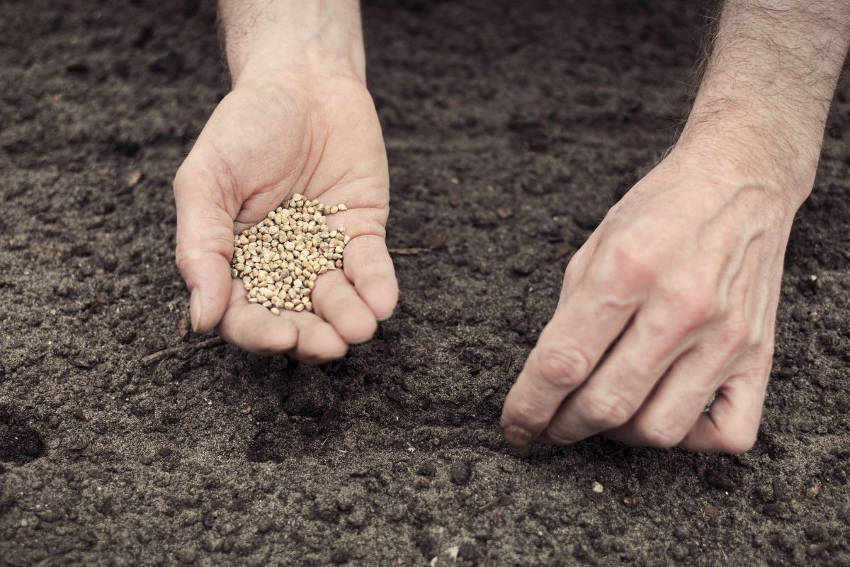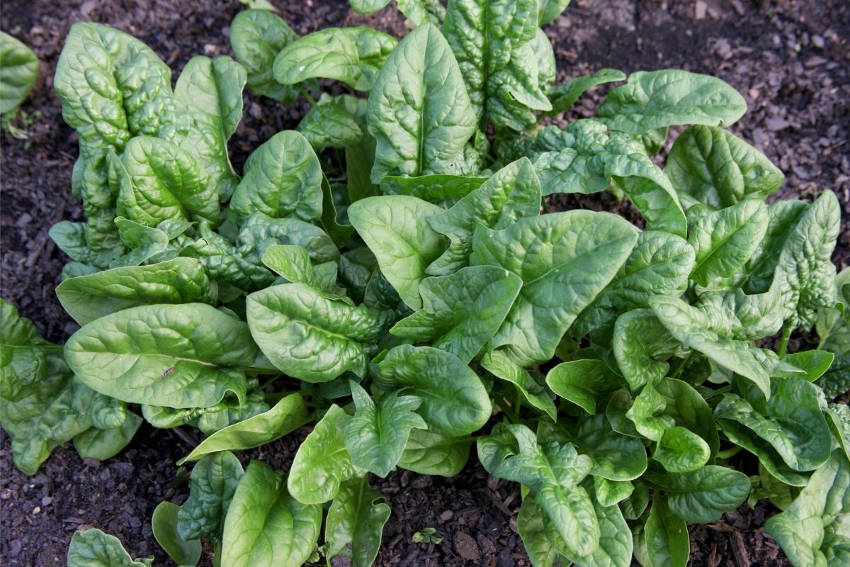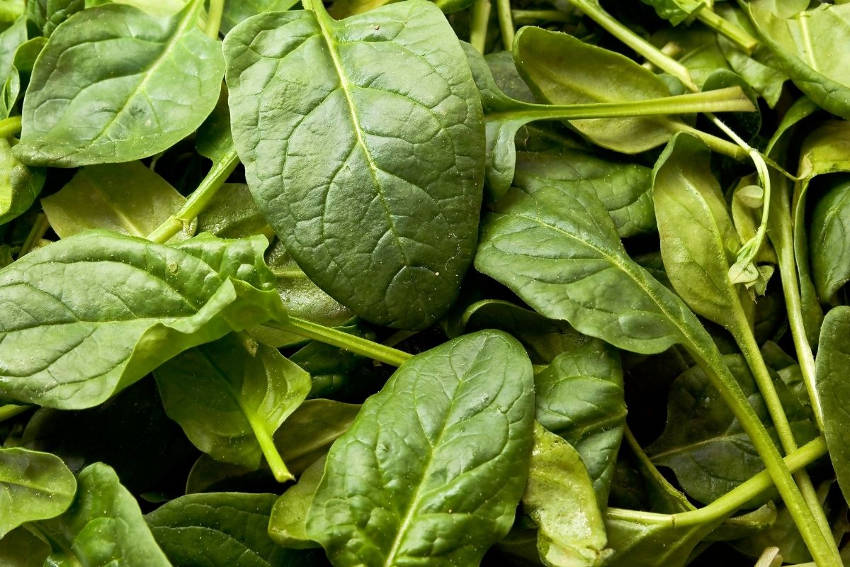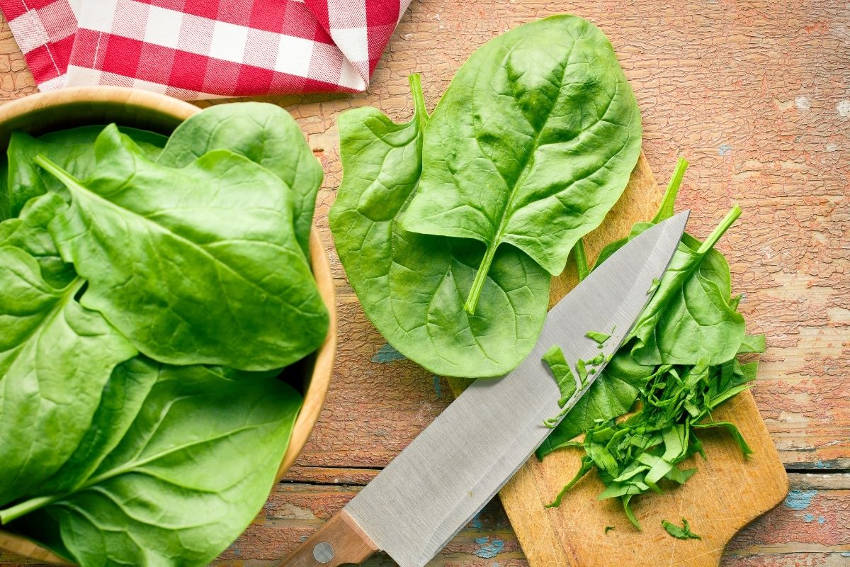Spinach was perhaps one of the first plants to receive the superfood label, thanks mainly to its generous iron and mineral content. Legend has it that this early status was down to a misprint which inflated the plant's iron levels by a factor of ten, leading to its inclusion in the famous Popeye cartoons.
But nonetheless, spinach is indeed one of the most nutritious leafy greens available, and it's also easy to grow. Here's what you need to know.
Spinach History and Description
Spinach originated in the Middle East several thousand years ago, and takes its common name from the Persian 'aspanak'. Known more formally as Spinacia oleracea, it's now grown worldwide, although it's estimated that 90% of today's global crop is produced in China.
It's a cool-climate plant which is usually grown as an annual, although under ideal conditions it can survive a winter to become a biennial.
Growing up to 30cm high, spinach produces lush, dark green single leaves across multiple tender stems, with leaves ranging from 2-30cm in length and 1-15cm in breadth. A leaf's size depends not only on age, but also where it's located on the plant, with the larger leaves growing at the base.
Left to reach maturity, spinach produces clusters of tiny greenish-yellow flowers at the top of the central stem, followed by small, hard fruits containing seeds.
Spinach Types
The most common type of spinach is often called English spinach, and is available in spring and winter varieties for a long growing season. However, very few varieties of common spinach tolerate hot, bright days, quickly bolting to seed and becoming inedible.
There are also several other species which take the spinach name although they're not closely related to Spinacia oleracea. For example, New Zealand spinach (Tetragonia expansa) is from a completely different botanical family, and is much more tolerant of heat.
Similarly, perpetual spinach (Beta vulgaris var. cicla) is actually a type of chard, but produces dark, iron-flavoured leaves all year round, making a good substitute for when the true species is out of season.
Spinach in the Kitchen
When picked small and young, baby leaf spinach can be eaten raw in a salad, used as a smoothie ingredient, or added at the last minute to soups, stir fries, and so on. At this stage the taste is mild but as the leaves age they become progressively coarser and more metallic, and cooking is the better option.
Larger leaves are 90% water which is released during cooking, which drastically reduces their volume. Because of this, the most common cooking method is to wash the leaves, shake them dry, and them put them in a covered pan over a medium heat. They'll steam in the residual water along with their own released liquid.
Once tender, squeeze out most of the remaining moisture and chop. The leaves can then be used plain as a side, mixed with cream, whizzed into a soup, or added to curries and stews
Spinach's Nutritional Benefits
While there are certainly some exaggerated claims made on spinach's behalf, it's a genuinely nutritious veggie and is especially rich in iron. However, the leaves need cooking to release the mineral in a form that's easily absorbed by the body,
Spinach also contains high levels of vitamins A, B, C, and K for all-round health and immune support, useful amounts of calcium, and high levels of magnesium which is beneficial for heart health and the nervous system.
How to Grow Spinach
Spinach is best sown direct in early spring or autumn to avoid the hottest months. Bolt-resistant varieties can handle a little more warmth and sun, but few people manage to grow spinach successfully in any but the mildest summer.
Spinach prefers full sun, although in hotter areas partial shade can help prevent bolting. The soil should be fertile, ideally enriched with well-rotted organic matter beforehand, and should be well draining but not too sandy.
Sow the seeds 2cm deep in rows 30cm apart, with a minimum spacing of 5cm. As the plants grow, thin to around 20cm apart, using the thinnings in the kitchen.
Spinach can also be grown in a large pot at least 30cm wide and deep. Sow two or three seeds in a clump in the centre, then thin to one after germination.
Spinach grows quickly, so sowing every two to three weeks can provide extended harvests.
To prevent bolting, it's vital to maintain consistent watering from sowing through to harvest, with a little and often being the best strategy. Also, using a nitrogen-rich feed every two to three weeks will help increase leaf production.
Harvesting Spinach
Spinach can be treated as a cut-and-come-again crop once the leaves are at least 3cm in length, which generally takes one to two months from germination. Snip off individual leaves close to the ground using scissors, taking the outer leaves first and leaving the inner ones to continue growing.
Alternatively, let the plant grow into a dense rosette if you want to harvest a larger amount of leaves for cooking. However, take care not to let the plant cross the line into flowering and setting seed, which can happen surprisingly quickly.
Common Spinach Problems
Spinach is relatively unaffected by pests and problems, mainly thanks to its vigorous growth. The most common failure is the plant bolting prematurely to seed, and this can be avoided by growing only in cooler seasons and by watering consistently.
Slugs and snails can be a problem for tender young seedlings, but are rarely an issue once the plant becomes more established. Similarly, birds can feast on newly germinated seedlings, so netting or other protection may be an option in the earliest stages of growth.
Netting will also reduce any caterpillar problems by preventing egg laying, and can also deter an infestation of greenhouse whitefly. However, neither of these pests are particularly overwhelming for spinach.
In terms of disease, there are various fungal infections which cause discoloration and spotting on the leaves. Ensuring good airflow and watering carefully in the mornings can reduce the risks. However, in areas where mould is a recurring problem, it might be worth trying a mildew-resistant variety.
And lastly, spinach leaves should start off a vibrant green and get darker as they age. Any yellowing is usually a sign of a nutritional deficiency, and can be treated with a nitrogen-rich or general purpose fertiliser.
However, don't let this list of potential problems discourage you. Spinach is one of the lowest-maintenance leafy greens available, and will reward the minimal effort of growing with a large harvest of leaves better than anything found in a supermarket.
Browse our range of Spinach seeds.









